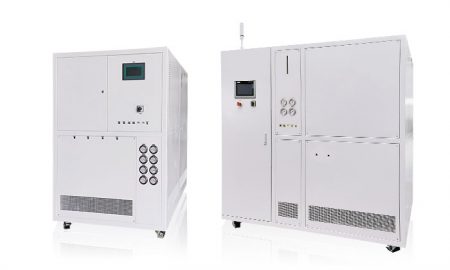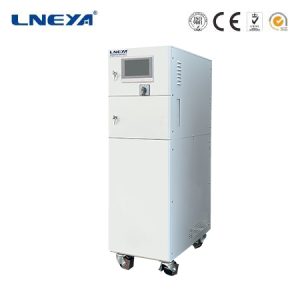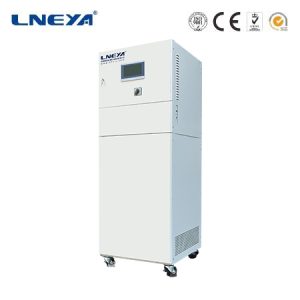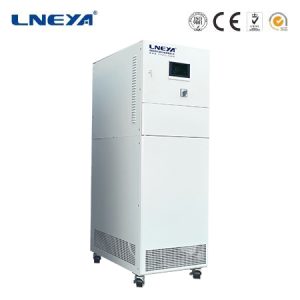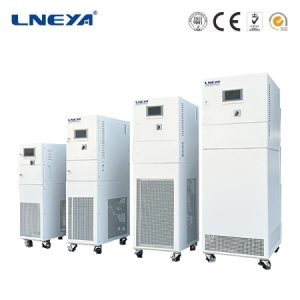Liquid Cooled Battery Racks
Kontaktieren Sie uns noch heute für die perfekte Lösung zur Temperaturkontrolle
As the main energy storage component of electric vehicles, battery modules are key components of electric vehicles and directly affect the performance of electric vehicles. During the use of the battery module, due to the certain internal resistance of the internal cells, a certain amount of heat will be generated during normal operation, causing the internal temperature of the module to rise. The normal operating temperature range of the battery core is 15~35℃. Exceeding 60℃ will cause certain safety hazards. The generation and rapid accumulation of heat will inevitably increase the internal temperature of the battery, especially when used in high temperature environments or when charging and discharging with large currents. , may trigger a violent chemical reaction inside the battery, generating a large amount of heat. If the heat does not have time to dissipate and quickly accumulates inside the battery, the battery may leak, gas, smoke, etc. In severe cases, the battery may burn violently or even explode. In order to eliminate this danger, the battery module needs to be dissipated to prevent the battery core from being in a high temperature state for a long time, which will affect the performance of the battery core and reduce the service life of the battery core.
The working principle of the liquid cooling plate is that the excess heat generated by the battery operation is transferred through contact with the surface of the plate-shaped aluminum device. The liquid cooling system utilizes the characteristics of the large heat transfer coefficient of liquid flow and relies on the liquid flow to transfer high heat, and is eventually used. The cooling liquid passing through the internal flow channel of the device is carried away.

Battery modules have certain requirements for liquid cooling plates. The first is the high heat dissipation power, which can quickly take away the heat generated by the module and prevent the temperature from rising sharply; the second is high reliability. When the vehicle is walking on the road, the battery pack in working condition must undergo various environmental tests and vibrations. , impact, high and low temperature and other relatively harsh working environments, the working voltage of the power battery pack can easily reach several hundred volts, and the leakage of coolant will become a very serious problem. Even if a coolant with good insulation performance is used, it will encounter external substances. After being doped, its insulation performance will be immediately reduced, causing certain safety risks. Therefore, the reliability of the sealing of the liquid cooling plate is very important; in addition, the heat dissipation design must be precise to avoid excessive temperature differences within the system and the impact of the operating temperature on the battery. The performance and aging of the battery have a very important impact; the last is the weight requirement. The battery pack currently focuses on lightweighting, which requires every component in the pack to be lightweight. If the liquid cooling plate takes up too much weight, It will directly affect the energy density of the battery module, which is unacceptable.
In response to the above problems, liquid cooling plates generally use copper tubes buried in aluminum substrates during the design process. That is, the aluminum substrate is machined and milled with computer numerical control technology, and then a stamping machine is used to press the bent copper tubes onto the aluminum substrate. Perform brazing welding. This design, on the one hand, reduces the weight of aluminum and controls costs, and on the other hand, makes full use of the high thermal conductivity of copper tubes. Finally, two inlets and outlets are set up to inject the corresponding liquid refrigerant, usually water or a mixture of water and organic alcohol (alcohol can prevent water from freezing at low temperatures), and the water pump controls the circulation of the liquid. Water or a mixture of it and organic alcohol is used as a liquid cooling agent because in physics, the thermal conductivity coefficient and specific heat capacity of water are much larger than that of air, the heat conduction speed is fast, and the temperature rise is relatively slow, so water is a relatively Ideal heat dissipation medium. In the battery pack, because depending on the environment, water is easy to freeze when a low temperature environment occurs, which is very detrimental to heat dissipation. In order to solve this problem, a mixture ratio of water and organic alcohol is generally used as the refrigerant, and the results are very good. verification.
Liquid cooling refers to the cooling liquid that passes through the internal cooling pipes and cold plates of the battery pack to take away the heat generated by the battery during operation to reduce the temperature of the battery. The advantages are its high heat transfer coefficient, large thermal energy, fast cooling efficiency, and remarkable battery consistency. The disadvantage is that because the liquid exists inside, the safety performance is relatively high in a sealed space. Compared with air cooling and natural cooling, the cost is also relatively low.
E-Mail: info@lneya.com WeChat ID: +8615251628237 WhatsApp: +86 17851209193
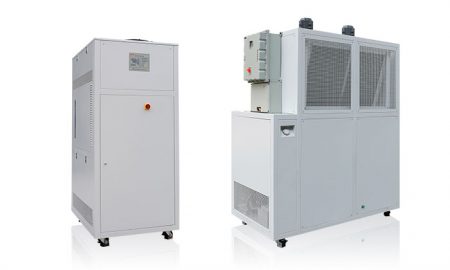 Präzisionskältemaschinen / Kleinkältemaschinen
Präzisionskältemaschinen / Kleinkältemaschinen
Die Kältemaschine kann in verschiedenen Industrien und Labors eingesetzt werden und unterstützt kundenspezifische Designs.
| Temperaturbereich | -18°C ~ +30°C | +5°C ~ +35°C Reihe |
| Kühlleistung | 0,35 ~ 0,9kW | 1,8 ~ 50kW |
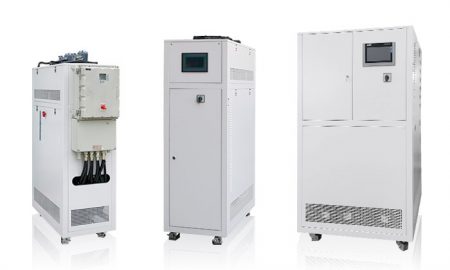
Rückkühler
Unser Rückkühler arbeitet mit Niedertemperatur-Kältetechnik, die Temperatur beträgt bis zu -120℃, und verschiedene Zubehörteile sind anpassbar.
| Temperaturbereich | Serie -25°C ~ +30°C | -45°C ~ +30°C Reihe | Serie -60°C ~ -20°C | Serie -80°C ~ -20°C | Serie -120°C ~ -70°C |
| Kühlleistung | 0,8 ~ 30kW | 0,75 ~ 12kW | 0,4 ~ 6kW | 0,2 ~ 6kW | 0,3 ~ 5kW |
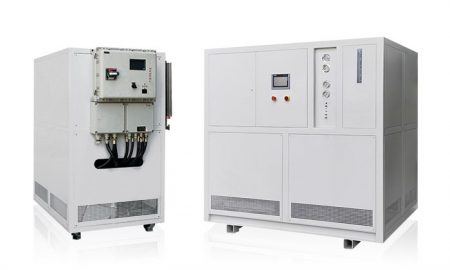
Niedertemperatur-Kühlgeräte
Wir haben uns auf die Herstellung von Niedertemperaturkältemaschinen mit einem Temperaturregelbereich von bis zu -150°C spezialisiert, die den Kühlbedarf verschiedener Branchen decken.
| Temperaturbereich | Serie -25°C ~ -5°C | Serie -45°C ~ -10°C | Serie -60°C ~ -10°C | Serie -80°C ~ -30°C | Serie -110°C ~ -50°C | Serie -150°C ~ -110°C |
| Kühlleistung | 12 ~ 360kW | 6 ~ 180kW | 6 ~ 180kW | 4 ~ 180kW | 2 ~ 120kW | 2,5 ~ 11kW |
Temperatursimulation für die Qualitätsprüfung von Fahrzeugen: Prüfung der Batterielebensdauer, Prüfstand für Einspritzdüsen/Motoren, Airbag-Prüfung, Komponentenprüfstand, usw.
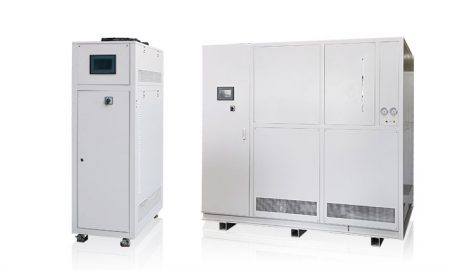
Geeignet für die präzise Temperaturkontrolle von elektronischen Bauteilen. Bei der Herstellung von elektronischen Halbleiterkomponenten für raue Umgebungen umfassen die Phasen der IC-Gehäusemontage sowie der Entwicklungs- und Produktionstests auch elektronische Wärmetests und andere Simulationen von Umwelttests.

Flüssigkeitskühlung für Batterie-Energiespeichersysteme
| Typen | Für Converting Station | Für Energiespeicherbatterie | Für die Ladestation |
| Kühlleistung | 45kW | 5 ~ 8,5kW | 4kW |

Baureihe ZLFQ
Kühlmittelverteilereinheit
Flüssigkeitskühlgeräte eignen sich für die Prüfung von Halbleitern, die Prüfung elektronischer Geräte bei konstanter Temperatur, die Kühlung der Serverinfrastruktur und andere Orte, an denen die Temperatur von Flüssigkeiten kontrolliert wird.
| Temperaturbereich | +5°C ~ +35°C | +5°C ~ +35°C |
| Kühlleistung | 15 ~ 150kW | 200 ~ 500kW |

MD-Thermofutter-Serie
Es wird für die Prüfung von HF-Bauteilen und Leistungsbauteilen mit hoher Dichte (IGBTs und MOSFETs) verwendet und kann auch für die schnelle Kühlung von flachen Laborplatten (Plasma, biologische Produkte, Batterien) usw. eingesetzt werden.
| Temperaturbereich | -75°C ~ +225°C |
| Temperaturgenauigkeit | ±0.1℃ |
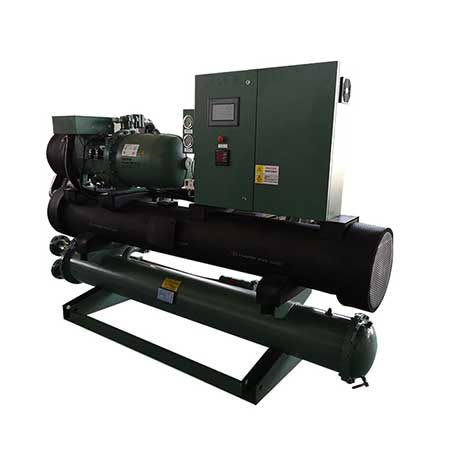
Schraubenkühler (Benutzerdefinierte Designs)
Niedertemperatur-Schraubenkühlmaschinen und Raumtemperatur-Schraubenkühlmaschinen
| Temperaturbereich | +5°C ~ +30°C | +5°C ~ +30°C | +5°C ~ +30°C | +5°C ~ +30°C | -25°C ~ +5°C | -25°C ~ +5°C |
| Kühlleistung | 107 ~ 1027kW (Einzelverdichter) | 299 ~ 2134kW (Doppelkompressor) | 98 ~ 934kW (Einzelverdichter) | 272 ~ 1940kW (Doppelkompressor) | 48 ~ 467kW (Einzelverdichter) | 51 ~ 497kW (Einzelverdichter) |
 LNEYA
LNEYA
 简体中文
简体中文












































































